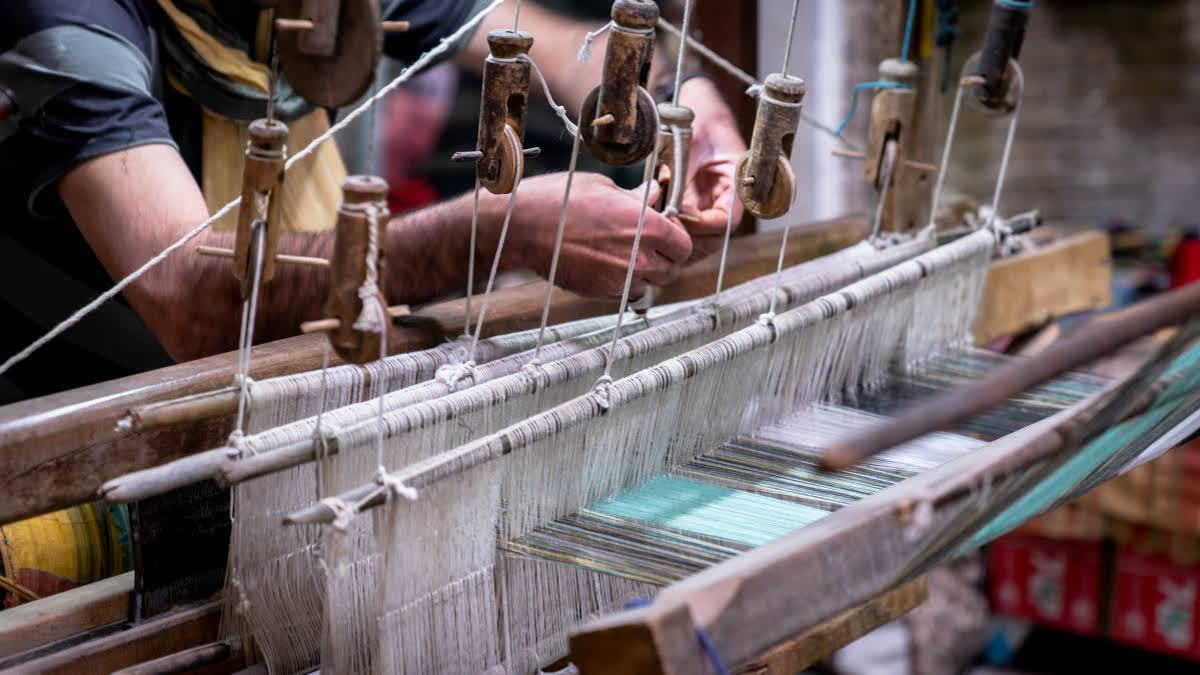Hyderabad: The National Handloom Week is celebrated every year from April 7-14 every year. A major source of income in rural and semi-rural areas of our nation is the handloom industry. It is a symbol of our rich and diverse cultural history.
Furthermore, since women make up over 70 per cent of weavers and related workers, this industry directly addresses the empowerment of women. Emancipated from the natural world, it boasts environmentally sustainable production methods that use little energy and money, and it has the adaptability to adapt to rapidly shifting consumer tastes and fashion trends.
Despite being thousands of years old, the handloom sector in India is gradually disappearing.
What Is Handloom?: A 'loom' used to weave cloth without the use of electricity is called a "handloom." Handlooms, also known as frame looms, are typically found in the homes of weavers. The main process of weaving involves weaving together two sets of yarn, called the warp (length) and the weft (width). The loom is the piece of equipment that makes this interlacing possible.
Advantages of Handloom Cotton: Human manipulation of the yarn during the weaving process is what gives the handloom experience its soft, pleasant, and long-lasting qualities. Yarn and cloth are hence far less stressed and harmed. When compared to cotton manufactured in mills, hand-woven cotton is renowned for being more breathable. This suggests that it is cooler, softer, and more absorbent because it permits more air to penetrate. In the summer it keeps you cool, and in the winter it keeps you warm.
Various Perspectives on Handlooms:
Handloom items and weaving have been a part of our culture for many centuries. Customers now have numerous perceptions that may not be entirely accurate due to the significant rise in distance and disconnect between the weaver and the customer over the past few decades. A common misconception is that handlooms are used to weave all cotton. This is untrue because big mills and power looms produce a significant portion of the cotton fabric used in clothing. The majority of cotton clothing that is sold in mainstream stores is not constructed from hand-woven fabric.
Another belief is that handlooms ought to be less expensive. In addition to the cost of raw materials, handlooms also incur payroll costs for the labour-intensive hand pre-loom and hand-woven fabrics. Because power looms and mills use mechanised methods, their woven goods are less expensive than those made by hand. This is something to be aware of before purchasing handloom goods.
Purpose Of National Handloom Week: Handloom products include silk and handloom sarees, clothing, gamchas, shawls, stoles, scarves, dupattas, and other ready-made items. They also include home furnishings like carpets, rugs, mats, bedsheets, and covers, as well as kitchen linen, hand towels, and napkins.
The purpose of Handloom Week is to showcase the variety of handloom items that are created by handloom clusters under the Ministry of Textiles' Integrated Handloom Cluster Development Scheme.



